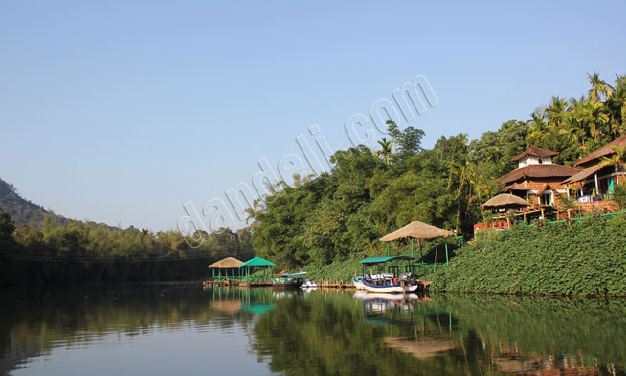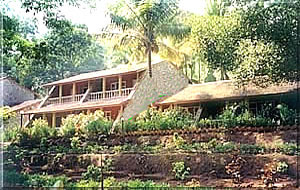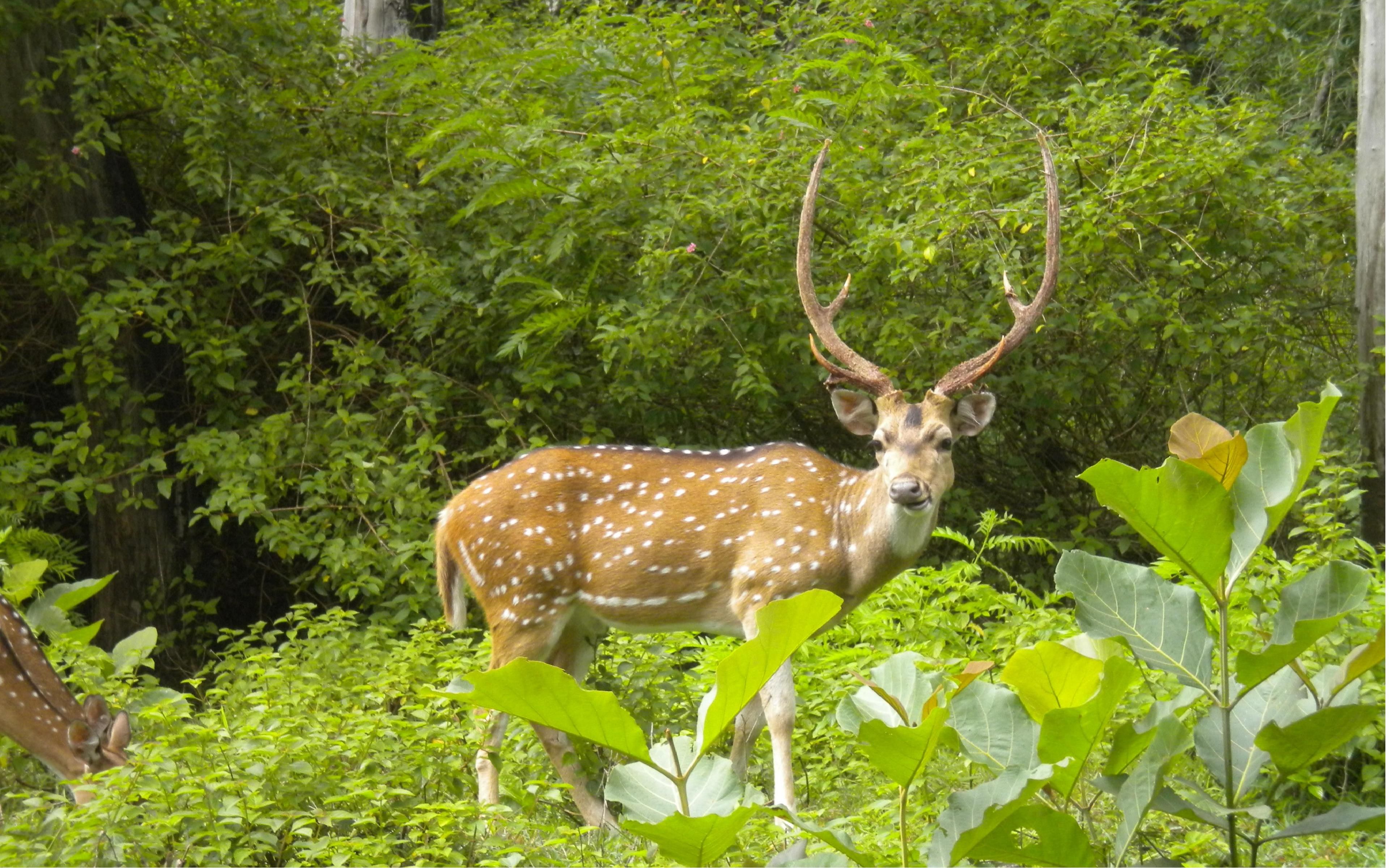Gir Forest National Park, Gujarat
The Gir wildlife sanctuary is home to the last remaining wild Asian lions on earth. But chances of seeing a tiger here are zero, because it has no tigers. Apart from lions, the second most common predator found in these forests is the leopard. The park offers many excellent drives through scenic areas, in jeeps.
1412 sq km of deciduous forest interspersed with semi-evergreen and evergreen flora, acacia, scrub jungle, grasslands and rocky hills. Fed by perennial and seasonal rivers and streams, the sanctuary has large water bodies like the Kamleshwar Dam that are good for crocodiles and birds.
It is the sole home of the Asiatic Lions and is considered to be one of the most important protected areas in Asia due to its supported species. The ecosystem of Gir, with its diverse flora and fauna, is protected as a result of the efforts of the government forest department, wildlife activists and NGOs. The forest area of Gir and its lions were declared as "protected" in the early 1900s by the Nawab of theprincely state of Junagadh. This initiative assisted in the conservation of the lions whose population had plummeted to only 15 through slaughter for trophy hunting.
The April 2010 census recorded the lion-count in Gir at 411, an increase of 52 compared to 2005. The lion breeding programme covering the park and surrounding area has bred about 180 lions in captivity since its inception.
According to official census figures, Gir has about 410 lions and 300 leopards, making it one of the major big-cat concentrations in India. Sambar and spotted deer (chital), blue bull (nilgai), chousingha (the world's only four-horned antelope), chinkara (Indian gazelle) and wild boar thrive in Gir. Jackal, striped hyena, jungle cat, rusty-spotted cat, langur, porcupine, black-naped Indian hare are among the other mammals of Gir.
Gir has a large population of marsh crocodile or mugger, which is among the 40 species of reptiles and amphibians recorded in the sanctuary.
The park checklist has 250 birds and about 50 other species (including the endangered lesser florican and the saras crane) are recorded in the grasslands along the perifery of the sanctuary. Many species like the painted sandgrouse, grey francolin, quails, Asian paradise flycatcher, black-naped monarch, white-browed fantail, Asian brown flycatcher, grey-headed flycatcher, verditer flycatcher, tickell's blue flycatcher, greenish warbler, white-eye, coppersmith barbet, common and marshal's iora, rufous treepie, yellow-footed green pigeon have been spotted by our guests around the lodge itself. Long-billed vulture, Indian white-backed vulture, red-headed (king) vulture, Eurasian griffon vulture, changeable hawk-eagle, crested serpent eagle, bonneli's eagle, greater spotted eagle, lesser spotted eagle, tawny eagle, steppe eagle, imperial eagle, Pallas's fish eagle, grey-headed fish eagle, osprey, peregrine falcon, laggar falcon, red-headed falcon, oriental honey-buzzard, white-eyed buzzard and other raptors have been seen in the sanctuary. Gir also has brown fish owl, Eurasian eagle owl, spotted owlet. In the evening, nightjars can be seen near the lodge gate.
Located- Junagadh district, Gir somnath district and Amreli district Gujrat, India.
Nearest city- Veeraval.
Activities to do- wildlife safari.
Best time to visit- November to June.
How to reach?-
1) By Air- Keshod is the nearest airport to gir which is 90 km far away .
Diu is also nearest airport to gir which is located at Nagoa which is 84 km far away from Gir Forest. Only Jet Airways is the only airline which provides direct flights to Mumbai and Porbandar. Flight to Mumbai is listed everyday except on Saturday. International Tourists can take a flight to Mumbai then head towards Diu via air and then by means of private transport or state transport,you can reach Sasan Gir Forest. Journey by road takes near about 2 hours.
Rajkot is the nearest Airport which is located at the distance of about 172 kilometers from Sasan Gir Forest is the next alternative for the tourists who prefer air travel. Rajkot Domestic Airport provides better air connectivity with Mumbai and other important destinations via regular flights operated by Air India, JetLite and Jet Airways.
2) By Rail- Sasan Gir also have a railway station connecting between several towns, cities and nearby states. Nearby towns are Veraval, Junagadh and Delwada which only takes 1km to the Sasan Gir National Park while the most convenient railway station is Rajkot.
If you wanted to travel through train then regular trains are connected to Junagadh to other cities in Gujarat and other states. There are trains for Jabalpur, Pune and Trivenndrum from Junagadh. There is also a meter-gauge service to Delvada and broad-gauge to Veraval and Rajkot.
Delhi is connected to Rajkot through various express trains which are the Sarvodaya Exp. (Dep. 21:55, Monday),Jat Jamnagar Exp. (21:55, Sun), Dee Porbandar Exp. (8:25, Mon, Thu),Uttaranchal Exp. (13:40, Sun).
3) By Road- Amreli district in Gujrat is well connected with the major cities of Gujrat, and Gujrat is very well connected with the the rest of the India.
BY AIR-keshod and the rajkot are the airports which are the nearest one. BY RAIL- Sasan gir railway station. BY ROAD-Amreli distrcit in gujarat is well coonected with the major cities.





